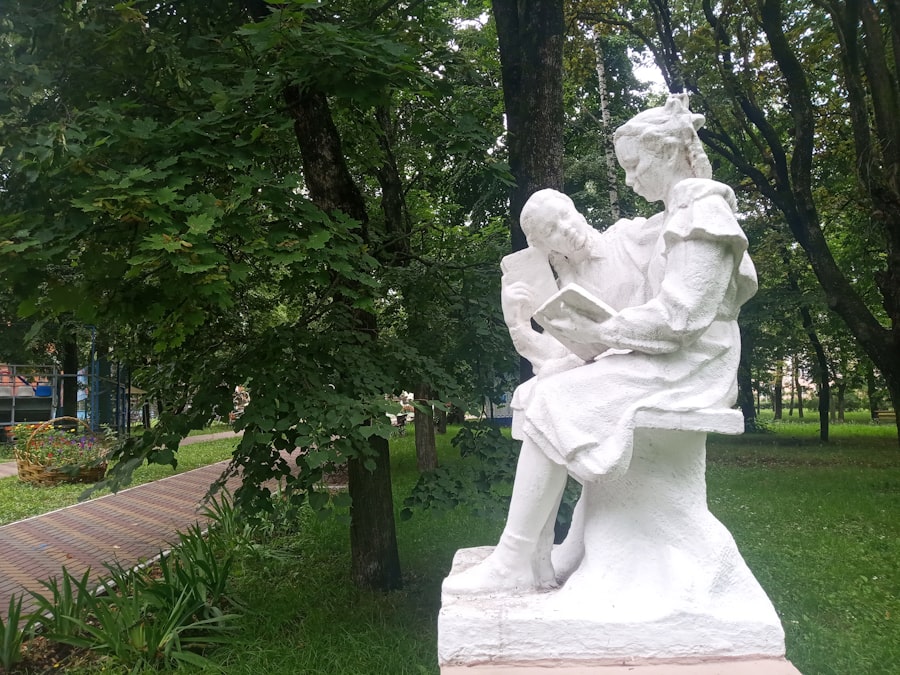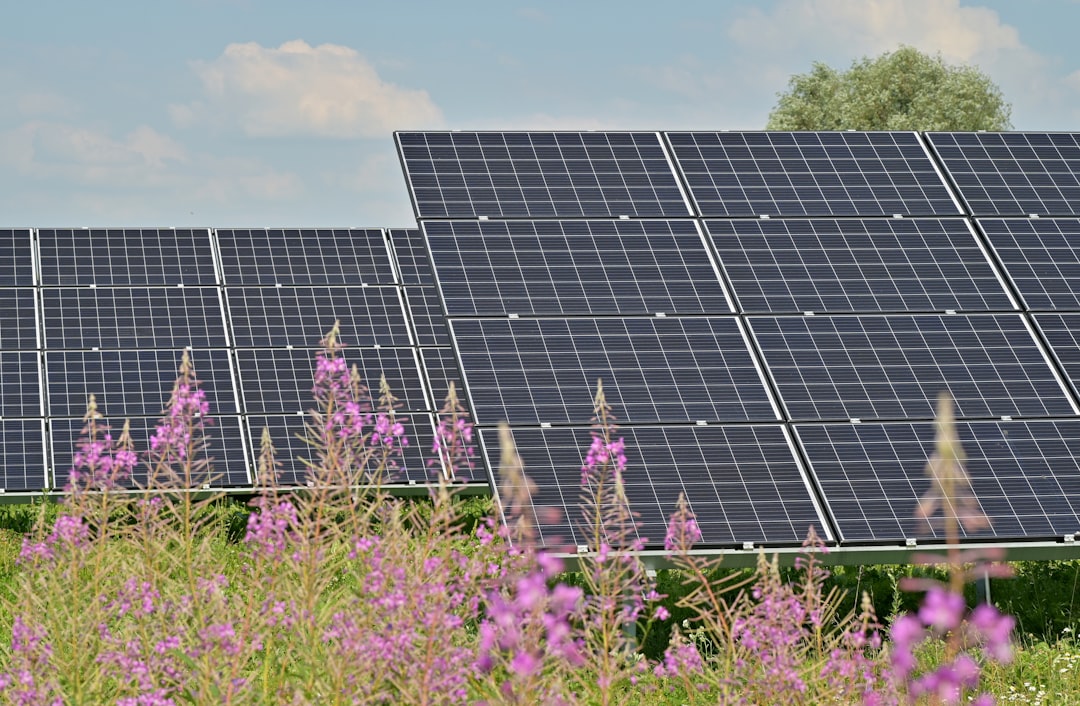Urban green spaces, encompassing parks, gardens, and green roofs, play a pivotal role in enhancing the quality of life in densely populated areas. These spaces serve as vital lungs for cities, providing essential ecological functions such as air purification, temperature regulation, and biodiversity support. The presence of greenery in urban settings can significantly mitigate the urban heat island effect, where cities experience higher temperatures than surrounding rural areas due to human activities and infrastructure.
For instance, studies have shown that areas with abundant vegetation can be up to 5 degrees cooler than their concrete counterparts, leading to reduced energy consumption for cooling and improved comfort for residents. Moreover, urban green spaces contribute to the aesthetic appeal of cities, transforming barren landscapes into vibrant environments that foster community engagement and social interaction. The visual presence of greenery can uplift the mood of city dwellers, providing a sense of tranquility amidst the hustle and bustle of urban life.
Parks and gardens not only offer recreational opportunities but also serve as venues for cultural events, art installations, and community gatherings. This integration of nature into urban design encourages a sense of belonging and pride among residents, ultimately fostering stronger community ties.
Key Takeaways
- Urban green spaces provide a range of benefits including improved air quality, reduced urban heat island effect, and increased biodiversity.
- Creating sustainable urban environments involves integrating green spaces into city planning, utilizing green infrastructure, and promoting sustainable transportation options.
- Green spaces contribute to improved public health and well-being by providing opportunities for physical activity, reducing stress, and promoting social interaction.
- The economic and social benefits of green spaces include increased property values, job creation, and enhanced community cohesion.
- Urban green spaces serve as community hubs by providing spaces for cultural events, recreational activities, and community gardening initiatives.
Creating Sustainable Urban Environments
The creation of sustainable urban environments hinges on the integration of green spaces into city planning and development. Sustainable urban design prioritizes ecological balance, resource efficiency, and social equity, all of which can be significantly enhanced through the incorporation of greenery. For example, green roofs and vertical gardens not only beautify buildings but also improve insulation, reduce stormwater runoff, and promote biodiversity by providing habitats for various species.
These innovative solutions exemplify how urban architecture can harmonize with nature, leading to more resilient cities capable of adapting to climate change. Furthermore, sustainable urban environments emphasize the importance of community involvement in the planning process. Engaging local residents in the design and maintenance of green spaces ensures that these areas meet the specific needs and desires of the community.
Participatory design processes can lead to more inclusive spaces that cater to diverse populations, fostering a sense of ownership and responsibility among residents. By prioritizing sustainability in urban planning, cities can create environments that not only support ecological health but also enhance social cohesion and economic vitality.
Improving Public Health and Well-being

The impact of urban green spaces on public health is profound and multifaceted. Access to nature has been linked to numerous physical and mental health benefits, including reduced stress levels, improved mood, and increased physical activity. Research indicates that individuals living near green spaces are more likely to engage in outdoor activities such as walking, jogging, or cycling, which contribute to overall fitness and well-being.
For instance, a study conducted in New York City found that residents living within a half-mile of a park reported higher levels of physical activity compared to those who did not have easy access to green areas. In addition to promoting physical health, urban green spaces play a crucial role in mental well-being. Nature has a restorative effect on the mind, helping to alleviate symptoms of anxiety and depression.
The presence of greenery can provide a calming environment that encourages mindfulness and relaxation. Community gardens, for example, not only offer fresh produce but also create opportunities for social interaction and skill-building among participants. These spaces foster a sense of purpose and belonging, which are essential components of mental health.
By prioritizing the development of green spaces in urban areas, cities can significantly enhance the overall health and well-being of their residents.
Economic and Social Benefits of Green Spaces
| Benefits | Metrics |
|---|---|
| Improved air quality | Reduction in air pollutants such as nitrogen dioxide and particulate matter |
| Enhanced mental well-being | Decrease in stress levels and improved mood |
| Increased physical activity | Rise in the number of people engaging in outdoor activities |
| Community cohesion | Strengthening of social ties and increased sense of belonging |
| Urban heat island reduction | Lowering of temperatures in urban areas |
The economic advantages of urban green spaces extend beyond mere aesthetics; they can significantly boost local economies. Properties located near parks and green areas often experience increased property values due to their desirable locations. A study by the National Association of Realtors found that homes within proximity to parks can command prices that are 20% higher than similar homes without nearby green spaces.
This increase in property value not only benefits homeowners but also generates higher tax revenues for municipalities, which can be reinvested into community services and infrastructure. Socially, green spaces serve as equalizers within urban environments. They provide accessible venues for recreation and leisure activities for individuals from all walks of life.
Parks can host a variety of events such as farmers’ markets, concerts, and festivals that bring together diverse communities. This inclusivity fosters social interaction and cultural exchange, breaking down barriers between different demographic groups. Furthermore, well-maintained green spaces can reduce crime rates by promoting community engagement and vigilance.
When residents take pride in their local parks and actively participate in their upkeep, they create safer environments for everyone.
Urban Green Spaces as Community Hubs
Urban green spaces often emerge as vital community hubs where residents gather to socialize, celebrate, and engage in recreational activities. These areas serve as focal points for community life, offering a range of amenities such as playgrounds, sports facilities, picnic areas, and walking trails. The design of these spaces is crucial; they must be accessible and welcoming to all demographics, including children, seniors, and individuals with disabilities.
For example, inclusive playgrounds equipped with adaptive equipment allow children of all abilities to play together, fostering social connections from an early age. Moreover, community gardens exemplify how urban green spaces can empower residents by providing opportunities for collaboration and skill-sharing. These gardens not only yield fresh produce but also serve as educational platforms where individuals can learn about sustainable gardening practices and nutrition.
The act of cultivating a garden together fosters teamwork and strengthens community bonds. In many cases, these gardens become catalysts for broader community initiatives focused on food security, environmental stewardship, and social justice.
Challenges and Solutions in Implementing Green Spaces

Despite the myriad benefits associated with urban green spaces, several challenges hinder their implementation in cities worldwide. One significant obstacle is the competition for land use in densely populated areas where real estate development often takes precedence over green space creation. As cities continue to expand, the pressure to maximize land for housing or commercial purposes can lead to the neglect or outright elimination of potential green areas.
Additionally, funding constraints may limit the ability of municipalities to invest in new parks or maintain existing ones. To address these challenges, innovative solutions must be explored. One approach is the concept of “green corridors,” which involves creating interconnected networks of parks and green spaces throughout urban areas.
This strategy not only maximizes limited land but also enhances accessibility for residents by providing safe routes for walking or cycling between different neighborhoods. Furthermore, public-private partnerships can play a crucial role in funding green space initiatives. Collaborations between local governments and private organizations can lead to shared resources and expertise in developing sustainable urban environments.
Designing and Maintaining Urban Green Spaces
The design and maintenance of urban green spaces require careful consideration to ensure they meet the needs of diverse communities while remaining sustainable over time. Effective design should prioritize accessibility, safety, and ecological integrity. Incorporating native plant species into landscaping not only supports local wildlife but also reduces maintenance costs associated with irrigation and pest control.
Additionally, creating multi-functional spaces that accommodate various activities—such as sports fields alongside quiet gardens—can maximize their utility for residents. Maintenance is equally critical in ensuring the longevity and appeal of urban green spaces. Regular upkeep involves tasks such as landscaping, litter removal, and infrastructure repairs.
Engaging local communities in maintenance efforts can foster a sense of ownership while reducing municipal costs. Volunteer programs that encourage residents to participate in clean-up days or planting events can strengthen community ties while ensuring that green spaces remain vibrant and inviting.
The Future of Urban Green Spaces
As cities continue to evolve in response to climate change and population growth, the future of urban green spaces will be shaped by innovative approaches that prioritize sustainability and resilience. The integration of technology into urban planning offers exciting possibilities for enhancing green spaces. Smart irrigation systems powered by sensors can optimize water usage in parks while monitoring plant health through data analytics.
Additionally, augmented reality applications could provide educational experiences within these spaces, allowing visitors to learn about local flora and fauna interactively. Furthermore, the concept of “biophilic design” is gaining traction in urban planning circles. This approach emphasizes the connection between humans and nature by incorporating natural elements into architectural designs—such as living walls or indoor gardens—thereby extending the benefits of greenery beyond traditional outdoor spaces.
As cities grapple with the challenges posed by climate change—such as increased flooding or heatwaves—urban green spaces will play an essential role in enhancing resilience through stormwater management strategies like bioswales or rain gardens. In conclusion, urban green spaces are indispensable components of modern cities that offer a multitude of benefits ranging from environmental sustainability to improved public health and economic vitality. As we look toward the future, it is imperative that city planners prioritize the development and maintenance of these vital areas to create healthier, more equitable urban environments for all residents.
FAQs
What are urban green spaces?
Urban green spaces are areas within cities and towns that are intentionally preserved or created to provide natural environments and recreational opportunities for residents. These spaces can include parks, gardens, community gardens, and other green areas.
What are the benefits of urban green spaces?
Urban green spaces provide numerous benefits to city residents, including improved mental and physical health, increased community cohesion, reduced air and noise pollution, and enhanced biodiversity. These spaces also offer opportunities for recreation, relaxation, and outdoor activities.
How do urban green spaces contribute to environmental sustainability?
Urban green spaces help to mitigate the urban heat island effect, reduce stormwater runoff, and improve air quality by absorbing carbon dioxide and releasing oxygen. They also provide habitat for wildlife and contribute to overall urban biodiversity.
How can urban green spaces be integrated into urban planning?
Urban green spaces can be integrated into urban planning through the creation of green corridors, pocket parks, rooftop gardens, and green roofs. City planners can also prioritize the preservation and enhancement of existing green spaces and incorporate them into new development projects.
What are some examples of successful urban green spaces?
Examples of successful urban green spaces include Central Park in New York City, Millennium Park in Chicago, and the High Line in Manhattan. Internationally, cities like Singapore and Copenhagen have also implemented innovative urban green space initiatives.


